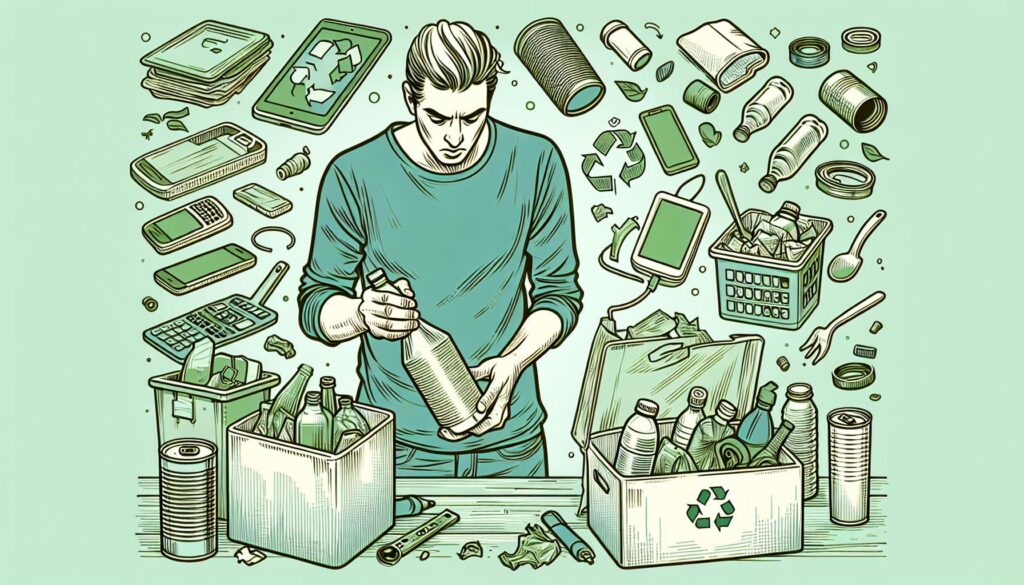As an expert in sustainable living, I’ve delved into the fascinating world of eco-friendly products. The lifecycle of these products is a crucial aspect often overlooked by consumers. Understanding how they are made, used, and disposed of is essential in making informed choices. Let’s explore the journey of eco-friendly products from inception to disposal.
From the sourcing of raw materials to the manufacturing process, eco-friendly products undergo a meticulous creation process. These products are designed with sustainability in mind, aiming to minimize environmental impact. But the journey doesn’t end there – knowing how to properly use and dispose of these items is equally important. Join me as we uncover the lifecycle of eco-friendly products and discover ways to make a positive impact on our planet.
Sourcing of Raw Materials
When it comes to sourcing raw materials for eco-friendly products, I always prioritize sustainability. It’s crucial to obtain materials that are renewable, responsibly harvested, or recycled to minimize the environmental impact.
In my experience, recycled materials are a fantastic choice for eco-friendly products. By utilizing materials that have already been used once, we can reduce the amount of waste ending up in landfills and lessen the demand for new raw resources.
Sustainable sourcing practices are key to ensuring the longevity of eco-friendly products. Whether it’s bamboo, organic cotton, recycled metals, or reclaimed wood, I always opt for materials that are grown, harvested, or extracted ethically and with minimal environmental impact.
In the world of eco-friendly product development, traceability is essential. Knowing exactly where and how each raw material was sourced allows us to maintain transparency and uphold our commitment to sustainability.
By carefully selecting and vetting our raw materials, we can create eco-friendly products that not only benefit the environment but also meet the high standards of quality and ethics that consumers are increasingly seeking.
Manufacturing Process
When it comes to the Manufacturing Process of eco-friendly products, sustainability remains at the forefront. Reducing carbon footprint and minimizing waste are key priorities throughout production. Energy-efficient practices are implemented to lower environmental impact. Every step, from sourcing materials to packaging, is carefully planned to uphold eco-friendly standards.
In the manufacturing phase, renewable energy sources are often utilized to power operations, further promoting environmental responsibility. Efficient production methods not only support sustainability but also contribute to cost-effectiveness in the long run. Recycled materials play a significant role, emphasizing the circular economy approach in product development.
Quality control is paramount during manufacturing to ensure that eco-friendly products meet high ethical and performance standards. Transparency is maintained at every stage, providing consumers with confidence in the product’s sustainability credentials. Certifications and third-party audits validate the eco-friendly claims, reinforcing trust in the brand’s commitment to environmental stewardship.
By integrating innovative technologies and green practices, the Manufacturing Process evolves to adapt to changing global demands for sustainable products. Continuous improvement and research into eco-friendly alternatives drive innovation in creating a circular and regenerative cycle for eco-friendly products.
Design for Sustainability
When developing eco-friendly products, Design for Sustainability is a critical phase that shapes the environmental impact of the final product. Innovative designs focus on minimizing resource consumption, reducing waste, and increasing product longevity. This approach ensures that eco-friendly products not only meet current sustainability standards but also pave the way for future advancements in environmentally conscious manufacturing.
In the design stage, I carefully consider using renewable materials and recyclable components that can be easily disassembled and repurposed. By incorporating biodegradable elements and minimalist packaging, I aim to reduce the ecological footprint of the product throughout its lifecycle. Striving for durability and repairability is another key aspect of sustainable design, promoting circular economy principles and extending the product’s usability.
Moreover, leveraging life cycle assessments enables me to evaluate the environmental impact of different design choices and make informed decisions to enhance sustainability. Collaborating with suppliers who share the same commitment to eco-conscious practices ensures that the entire supply chain aligns with sustainable principles, further strengthening the foundation of ethically produced eco-friendly products.
Proper Use of Eco-Friendly Products
When using eco-friendly products, it’s essential to maximize their environmental benefits. Here are some tips on the proper use of these products:
- Follow Instructions: Always adhere to the manufacturer’s guidelines for optimal performance.
- Avoid Overuse: Using more than necessary can negate the product’s eco-friendly features.
- Proper Disposal: Dispose of eco-friendly products correctly to ensure they can be recycled or composted.
- Maintenance: Regular maintenance can extend the lifespan of eco-friendly products, reducing the need for replacements.
Remember, sustainable use of eco-friendly products plays a significant role in reducing environmental impact.
Responsible Disposal Methods
When it comes to responsible disposal of eco-friendly products, it’s essential to prioritize recycling and composting to minimize environmental impact. Here are some key points to keep in mind:
- Check Local Recycling Guidelines: Before tossing eco-friendly products in the trash, it’s crucial to verify if they are recyclable in your area. Different regions have specific requirements for recycling, so make sure to follow the guidelines.
- Separate Materials: Sort eco-friendly products into the appropriate categories for recycling, such as plastics, glass, paper, and metal. This helps facilitate the recycling process and ensures that materials are properly processed.
- Look for Composting Opportunities: For biodegradable products like compostable packaging or food containers, consider composting them instead of sending them to the landfill. Composting not only reduces waste but also creates nutrient-rich soil for gardening.
- Dispose of Electronic Waste Properly: When it comes to electronic eco-friendly products, such as solar panels or rechargeable batteries, make sure to dispose of them at authorized recycling facilities to prevent harmful chemicals from leaching into the environment.
- Donate or Upcycle: Consider donating usable eco-friendly products to charities or upcycling them into creative projects to extend their lifespan and reduce overall waste.
Proper disposal of eco-friendly products plays a crucial role in closing the sustainability loop and minimizing their environmental impact. By incorporating these responsible disposal methods into our routines, we can contribute to a greener future.
Key Takeaways
- Sourcing raw materials responsibly is crucial for eco-friendly products to minimize environmental impact.
- Efficient manufacturing processes utilizing renewable energy and recycled materials are integral to sustainability.
- Designing products for sustainability by focusing on resource consumption, recyclability, and durability is key.
- Maximizing the environmental benefits of eco-friendly products through proper use and maintenance is essential.
- Responsible disposal methods such as recycling, composting, and upcycling help close the sustainability loop and reduce environmental impact.
Conclusion
Incorporating responsible disposal practices for eco-friendly products is crucial for a sustainable future. By following local recycling guidelines, composting biodegradable items, and properly disposing of electronic waste, we can all play a part in reducing environmental impact. Donating or upcycling products further minimizes waste and promotes a circular economy. These small actions, when done consistently, add up to significant positive changes for our planet. Let’s continue to prioritize eco-friendly practices in our daily lives to create a cleaner and healthier environment for generations to come.



